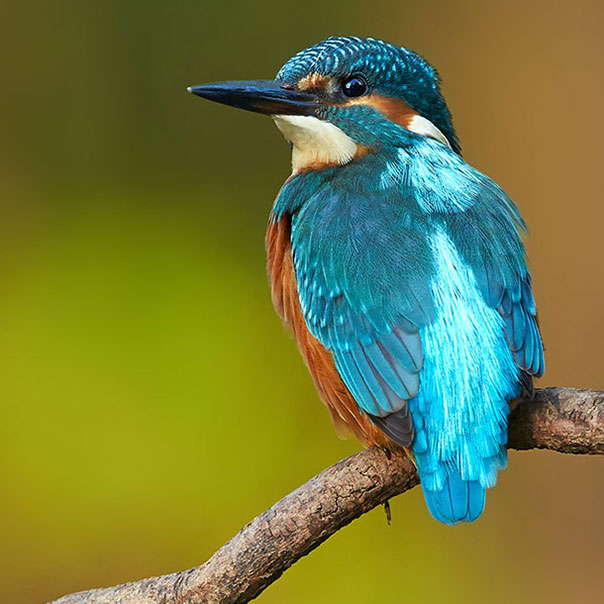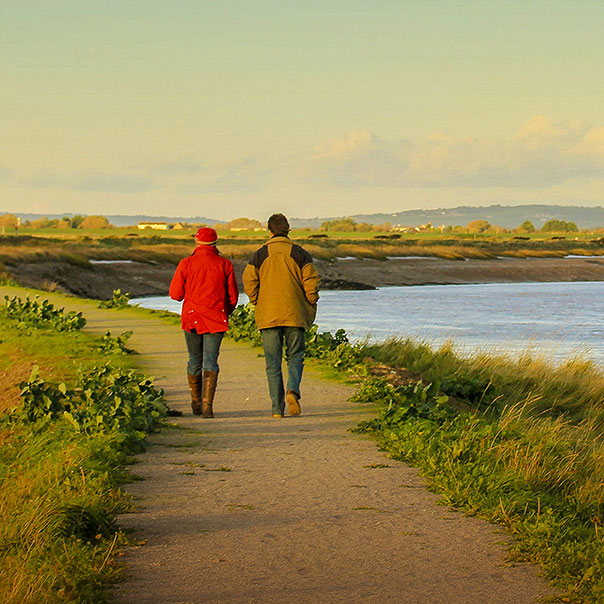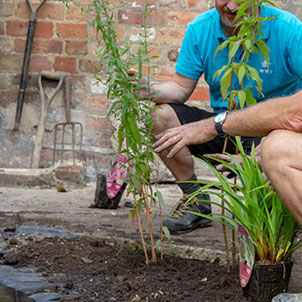Fens
A unique watery landscape steeped in history. Flat and low-lying, with an immense sense of space and endless skies, fenland is a very special kind of wetland habitat.
The fen wetlands that we see today aren’t the vast, natural, wild habitats that once covered the UK.
Their unique man-made beauty can seem like an unforgiving landscape but these water-logged lands support a rich variety of wildlife, and are wonderful spots to connect with wetland nature.
Introduction to Fens
What is a fen?
Fens are a type of freshwater peat-forming wetland fed by surface water run-off, ground water and rainfall. Fens are naturally thick with reeds and grasses, dark with peaty soil and are criss-crossed with scrapes, channels, dykes and ditches. They’re different from bogs in that they are less acidic, have higher nutrient levels and can support a more diverse collection of plants and animals.
Where do you find fens in the UK?
Fen can occur across the UK’s lowlands but is often only found in small fragments, a few metres square, isolated by intensively worked farmland. The Fens in Eastern England are the UK’s largest man-made landscape: 400,000 acres of dramatic, flat landscape that stretches hundreds of hectares across Lincolnshire, Cambridgeshire, Huntingdonshire, Norfolk and a small part of Suffolk. Once upon a time, it reached as far as north Yorkshire.
What lives in a fen?
Despite less than 1 % of the original fen habitats remaining in the UK, these fragments still support an exceptional diversity of wildlife, including endangered and unique species.
Today, only around 1 per cent of the fenland that once existed in the UK remains. Despite this huge loss UK fenland remains home to 13,000 different animal and plant species. Around one third of all plant species native to the UK can be found in fens - marsh orchids, fen violet, frogbit, greater bladderwort. They also support half of the dragonfly species and thousands of different species of beetles and flies. Look out for the tansy beetle, marsh carpet moth, and fen raft spider. Grass snakes and water voles are also known fenland residents.
The fens are also home to a huge number of bird species. At WWT Welney you’ll find flocks of wading birds as well as yellow wagtails, swallows and house martins. Herons, common cranes and barn owls also visit. In fact, there are wonderful wildlife spotting opportunities here all year long, including the magical sight of up to 9,000 wild Bewick’s and whooper swans during the winter months.
Why we need fens
It is still hugely fertile land. Although covering less than 4 per cent of England’s farmed area, the Fens produces more than 7 per cent of England’s total agricultural production. Including a third of England’s fresh vegetables and a fifth of its flowers and bulbs.
The Fens have an important part to play when it comes to the climate emergency. Wetlands are extremely efficient at pulling carbon dioxide out of the atmosphere and converting it into living plants and carbon-rich soil. Restoring and maintaining habitats such as fenland is essential if we are to maintain the effectiveness of these carbon sinks.
A 2017 report for DEFRA by the Centre for Ecology and Hydrology, Bangor stated that: "Conservation managed lowland fens appear to be among the most effective carbon sinks per unit area in England and Wales.”
Fens in culture and history
The fens were once a maze of marshes, peat bogs, lagoons and meandering rivers. For many hundreds of years the land was under water for much of the year. The ‘drowned fens’ seemed a wasteland to some, but there were many ‘products’ available for harvesting, some of very great value. They included fish, especially eels, wild birds, peat for fuel, sedge and reed for thatching.
When the water receded and land was available it was extremely fertile. At first gradually, and then systematically, the fenland was all but destroyed – drained in the 17th century to make the land more productive for growing food. The drainage was described as, “the greatest single ecological catastrophe that ever occurred in England,” by Ian D Rotherham in his book The Lost Fens. The natural wilderness, flora and fauna vanished, and local people who fished, hunted and harvested reeds lost their livelihoods.
For centuries writers have taken inspiration from the watery darkness of the fens, often portraying them as a place of mystery and intrigue. Graham Swift’s Waterland is probably the most well-known piece of fiction set in this intoxicating landscape. The novel details a family’s struggle to survive the changing landscape.
‘They ceased to be water people and became land people; they ceased to fish and fowl and became plumbers of the land. They joined in the destiny of the Fens, which was to strive not for but against water. For a century and a half they dug, drained and pumped the land between the Bedford River and the Great Ouse, boots perpetually mud-caked, ignorant of how their efforts were, little by little, changing the map of England.’ Graham Swift, Waterland.
Threats to fens
The quality of the remaining areas of fenland is often compromised by water extraction or the prevention of flooding from nearby rivers and by the nutrients from agricultural run-off. Today the majority of fens are notified as Sites of Special Scientific Interest (SSSI) and many are notified as Wetlands of International Importance under the Ramsar Convention.
What is WWT doing to protect fens?
At WWT Welney we have restored 300 acres of fen on the Ouse Washes. Today Lady Fen is a diverse wonderland of habitat with open pools, wet hollows, tussocky areas, swamp and wet woodland. We manage it to ensure that it remains a prime habitat for wetland nature. These days, thanks to the pioneering work of our conservation teams, it is home to a large breeding population of black tailed godwits and this year’s exciting work to support the UKs dwindling corncrakes population.
Types of fenland
Fenlands can be classified by their pH levels and are usually divided into two sorts: rich fen and poor fen. Rich fen is seasonally or permanently water-logged, rich in calcium but nutrient poor. Poor fen is often short in vegetation, poor in minerals and supports dense carpets of sphagnum mosses. Despite the huge loss of fen habitat the UK still has most of the fen types found in Europe, but they are small surviving fragments of previously much more extensive wetlands.


